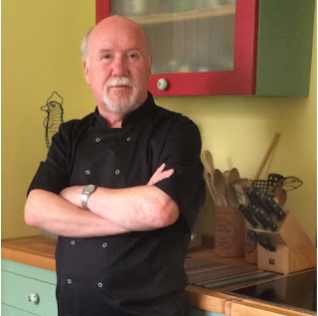Confit
The Recycled Cook
By Adrian Sleeman
 Confit
Confit
Recycling does not just mean using leftovers it also means taking something you have previously cooked
and turning it into another, often even tastier, dish.
For example, when you roast a whole Chicken, Guinea foul, Duck or any game bird you will sometimes be left with the legs, having used the breasts previously.
These are perfect for making a completely new meal worthy of any bistro. A great example of this is a "Confit", a common term for food that has been preserved, traditionally in duck or goose fat and stored in a cool place.
 Confit comes from the French word Confir (to preserve) and is one of the
oldest ways to preserve food, a speciality of southwestern France.
Confit comes from the French word Confir (to preserve) and is one of the
oldest ways to preserve food, a speciality of southwestern France. If you are a purist you may want to use this traditional method, it will keep perfectly well for several months, covered and kept in a cool place.

Just place the meat in a suitable container or bowl, gently melt the Duck or Goose fat, bring to boiling point then allow to cool slightly. Pour over the legs until they are immersed completely. Allow to cool and then cover with foil or muslin and store in a cool place until required.
You can of course refrigerate these but the original method was used because there was no such thing as refrigeration available. Food would have been stored in a cool dark place such as a larder.
Method:
When ready to cook, remove the legs from the fat, wipe away as much of the fat as possible and place on a rack in a roasting tin to drain while cooking. You N.B. you can just as easily freeze the pre-cooked meat instead with excellent results, just make sure to de-frost thoroughly before roasting.
Roast the legs on 150 degrees C (Gas Mark 4) for around 20 minutes to cook through and then increase the heat to 200 degrees C (Gas Mark 6) so that the skin becomes nice and crispy. Make sure that the centre of the leg is hot before serving, you cannot be too safe with re-heating poultry.
Chef's tip: Once cooked the confit can be served with a variety of interesting, accompanying side dishes such as a warm salad, potatoes, cous-cous, pollenta, rice or lentils.



Comments
Post a Comment